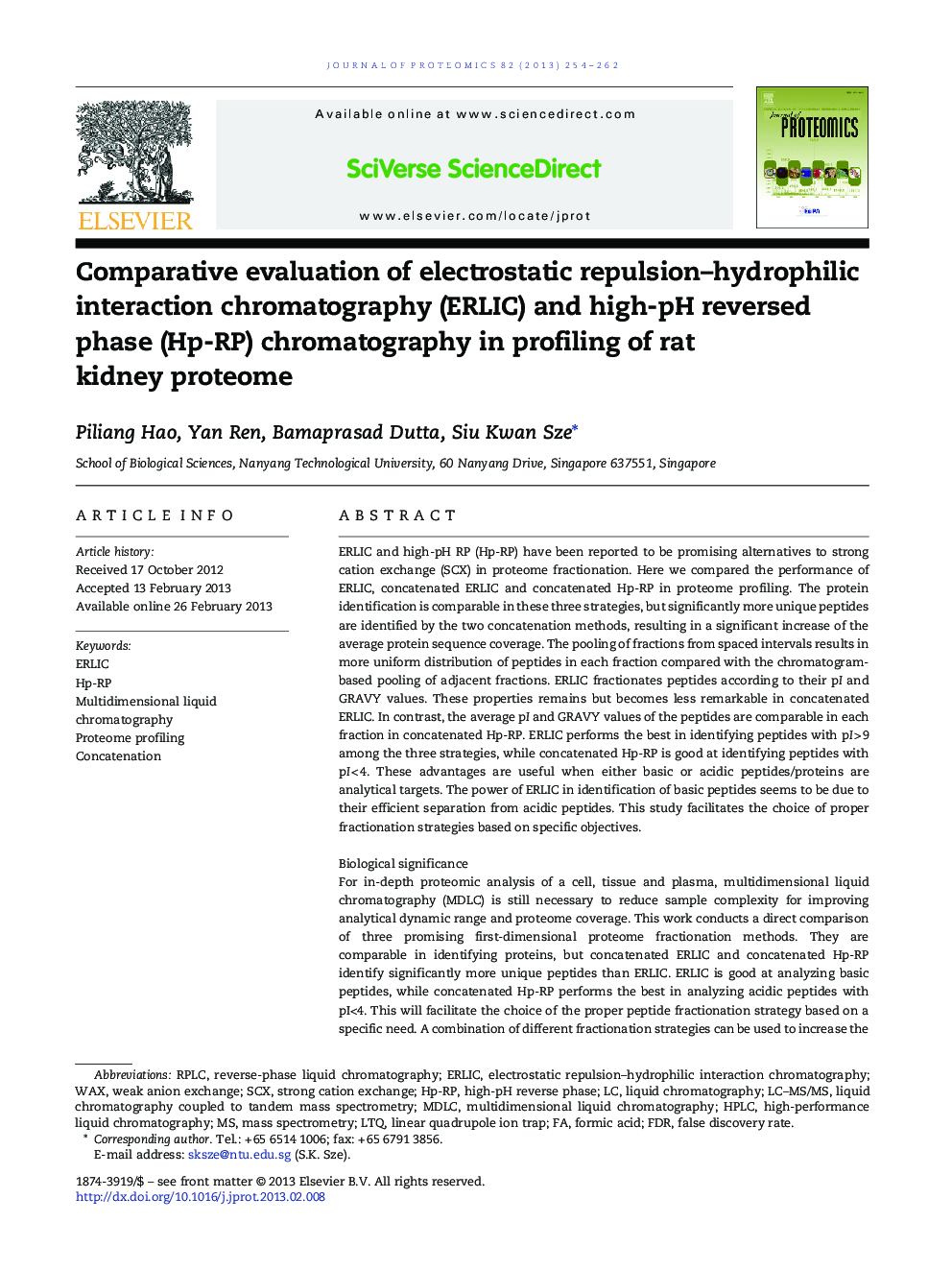| کد مقاله | کد نشریه | سال انتشار | مقاله انگلیسی | نسخه تمام متن |
|---|---|---|---|---|
| 1226188 | 1494798 | 2013 | 9 صفحه PDF | دانلود رایگان |

ERLIC and high-pH RP (Hp-RP) have been reported to be promising alternatives to strong cation exchange (SCX) in proteome fractionation. Here we compared the performance of ERLIC, concatenated ERLIC and concatenated Hp-RP in proteome profiling. The protein identification is comparable in these three strategies, but significantly more unique peptides are identified by the two concatenation methods, resulting in a significant increase of the average protein sequence coverage. The pooling of fractions from spaced intervals results in more uniform distribution of peptides in each fraction compared with the chromatogram-based pooling of adjacent fractions. ERLIC fractionates peptides according to their pI and GRAVY values. These properties remains but becomes less remarkable in concatenated ERLIC. In contrast, the average pI and GRAVY values of the peptides are comparable in each fraction in concatenated Hp-RP. ERLIC performs the best in identifying peptides with pI > 9 among the three strategies, while concatenated Hp-RP is good at identifying peptides with pI < 4. These advantages are useful when either basic or acidic peptides/proteins are analytical targets. The power of ERLIC in identification of basic peptides seems to be due to their efficient separation from acidic peptides. This study facilitates the choice of proper fractionation strategies based on specific objectives.Biological significanceFor in-depth proteomic analysis of a cell, tissue and plasma, multidimensional liquid chromatography (MDLC) is still necessary to reduce sample complexity for improving analytical dynamic range and proteome coverage. This work conducts a direct comparison of three promising first-dimensional proteome fractionation methods. They are comparable in identifying proteins, but concatenated ERLIC and concatenated Hp-RP identify significantly more unique peptides than ERLIC. ERLIC is good at analyzing basic peptides, while concatenated Hp-RP performs the best in analyzing acidic peptides with pI<4. This will facilitate the choice of the proper peptide fractionation strategy based on a specific need. A combination of different fractionation strategies can be used to increase the sequence coverage and number of protein identification due to the complementary effect between different methods.
Figure optionsDownload high-quality image (46 K)Download as PowerPoint slideHighlights
► Protein identification is comparable in ERLIC, concatenated ERLIC and concatenated Hp-RP.
► Significantly more unique peptides are identified by the two concatenation methods.
► ERLIC is good at analyzing basic peptides due to their separation from acidic peptides.
► Concatenated Hp-RP is good at identifying peptides with pI < 4.
Journal: Journal of Proteomics - Volume 82, 26 April 2013, Pages 254–262